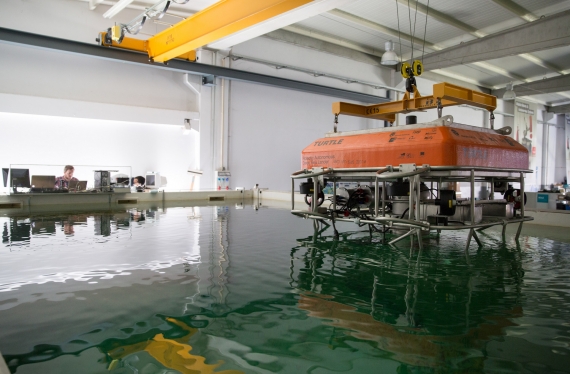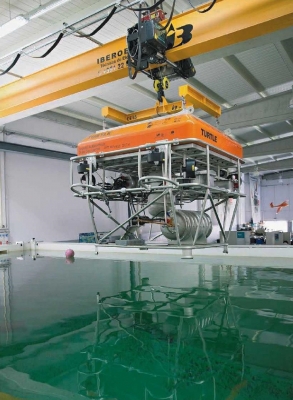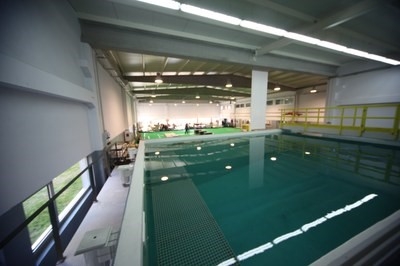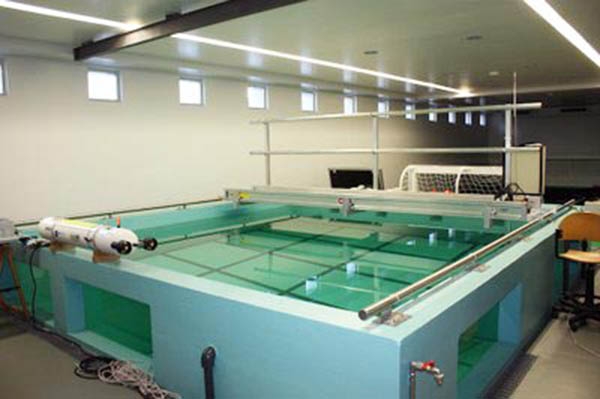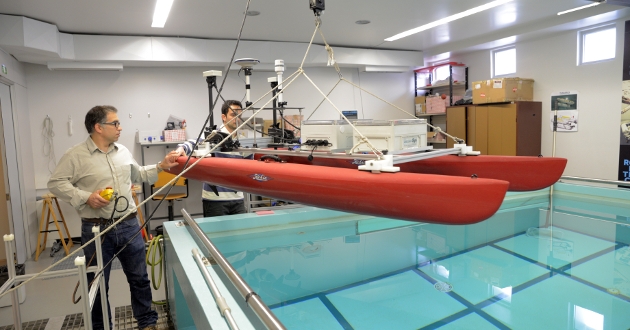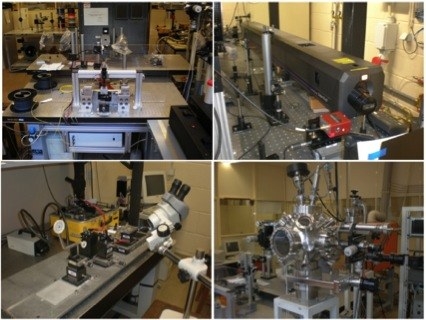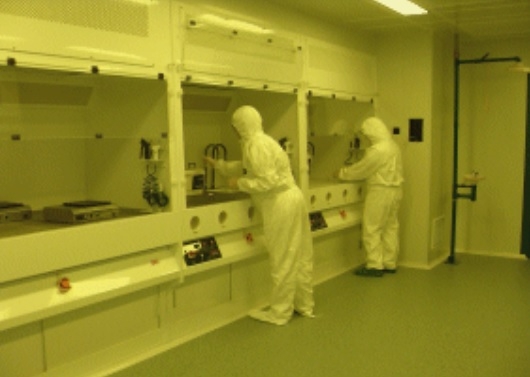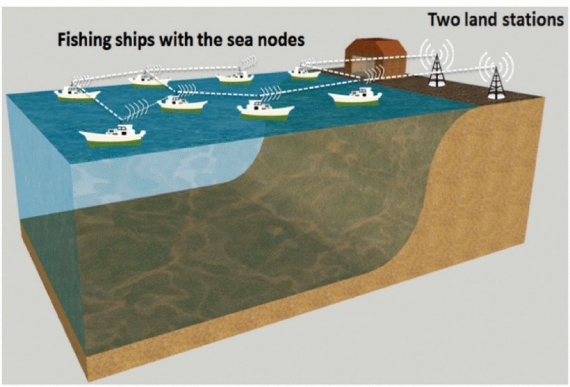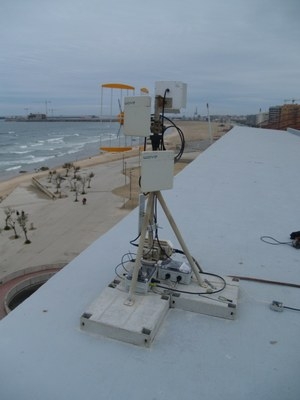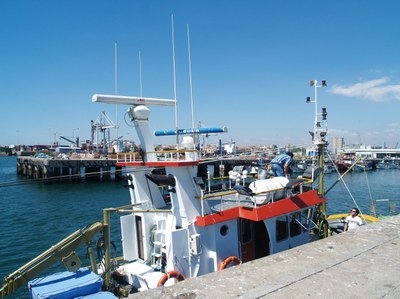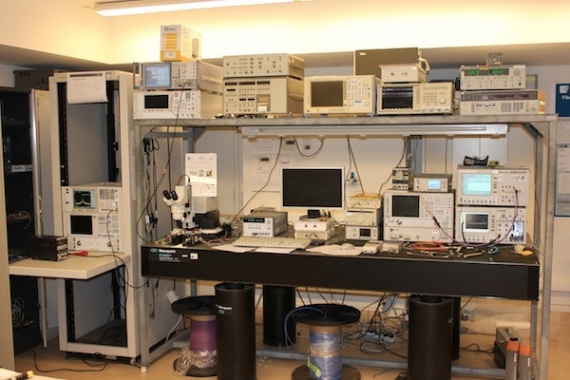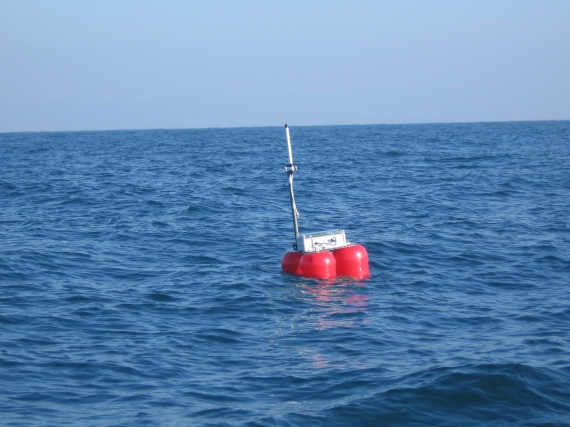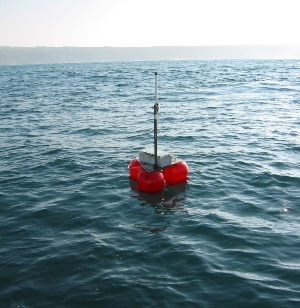Activities
Facilities
Centre for Robotics and Autonomous Systems (CRAS)
CRAS' facilities comprise robotics labs and the field robotics mobile lab, which are used for
scientific and technological testing, acquisition of data sets, experimental
runs and evaluation.
The robotics labs have equipment and tools required for
integration of payload system on-board of robotic platforms (at
the mechanical, electrical, and computational levels); besides, they are
also equipped with two water tanks, where underwater systems can be tested,
with the following dimensions (L x W x D, in meters):
10 x 6 x 5 and 4.5 x 4.5 x 2.
Among others, these labs are suitable for evaluation of
underwater electronic equipment, underwater navigation systems and control
strategies; underwater sensor
integration and evaluation; underwater
communications testing; developments in
advanced perception systems for localization and mapping; and teleoperation
training.
The field robotics mobile lab
is equipped with acoustic ground truth system for non GPS positioning,
underwater communication systems, surface Wi-Fi infrastructure, physical and
chemical sensors for probe calibration, and support vessels. This mobile lab is used for evaluation and testing of electronic equipment, navigation systems, control strategies, sensor response, communications, advanced perception
systems for localization and mapping, and behavioural modelling
and evaluation of marine systems.
Centre for Applied Photonics (CAP)
CAP’s facilities comprise the laboratory
for sensing technologies and the laboratory for imaging technologies, which have state of the art equipment and tools for the design, fabrication and
test of fibre optic based sensing systems.
The laboratory for
sensing technologies enables fabrication, test and characterization of
optical fibre sensors for detecting and measuring several physical (strain, temperature, vibration, salinity, electric current), chemical
(O2,
Methane, CO2, pH, heavy metal) and biological (toxin, bacteria) parameters. It has the capability of fabricating different fibre optic
devices (fibre
Bragg gratings, long period gratings, tapers, couplers and
interferometers), and also to use coating systems (which allow
the exploration of new functional materials, like thin films and nanostructured
materials, with enhanced sensing properties), thus providing a great
versatility in the design of new optical sensing systems.
A range of
optical sources, spectrum analysers and laser scanning units allow to test and
develop new interrogation systems for real time remote operation using
interferometry, absorption spectroscopy (NIR) and fluorescence. A diversity of
test facilities is available to characterize the sensors response to mechanical
parameters (strain, temperature, vibration), electrical current, gases, and
dissolved and volatile chemicals.
CAP has access
to a shared 200 square meter clean room (ISO6 and ISO7), with a controlled environment in terms
of temperature (20ºC ± 1ºC) and humidity (50% RH ± 5% RH). It is used
for micro and nano-scale device manufacturing, and is equipped with systems for coating (PECVD, sputtering, thermal evaporation, electron beam, ion beam, polymer coating and spin-coating), lithography (mask aligner, spinning, laser direct writing) and characterization (microscopy, profilometry).
The laboratory for imaging technologies comprises
advanced imaging systems for structural and spectral analysis
(functional and analytical characterization), such as, Optical Coherence
Tomography (OCT) systems, hyperspectral
systems based on compressive sensing technologies, LIDAR and
imaging LIDAR systems.
Centre for Telecommunications and Multimedia (CTM)
CTM's facilities comprise the optical and electronic
technologies laboratory, and the maritime wireless networks testbed (MARBED).
The optical and electronic technologies laboratory has access to an anechoic
chamber and enables:
- S-parameter characterization of optoelectronic devices up to 20 GHz
- S-parameter characterization of electronic devices up to 50 GHz
- Bit error rate testing up to 13 Gbps
- Modulation and demodulation of RF signals using digital/analog modulations
- Modulation and detection of optical signals
- Antenna design and characterization
- Numerical simulation software (Matlab)
- Electromagnetic simulation software (COMSOL Multiphysics)
- Laboratory monitoring and support
MARBED is a maritime wireless networks testbed composed of two land stations and eight sea nodes deployed in fishing ships, sailing within the coast line of the Porto Metropolitan area up to 10 nautical miles from shore.
The testbed is up and running since 2013 and in the short to medium-term will evolve to four land stations and thirty ships. In the long-term, the aim is to extend it further along the Atlantic coast of Portugal.
By using MARBED, we were already able to get pioneer results on Wi-Fi maritime communications, which have shown the feasibility of Wi-Fi long-range maritime communications, but also the myriad of problems and challenges that still need to be faced in this new environment towards the Future Internet.
Other
- Support facilities at Leixões sea port.
- Platforms capable of supporting different payloads, including a robotics fleet of air, land and sea vehicles.
- Navigation and instrumentation buoys (NIBs) are moored floating platforms with on-board electronics and energy management system. The basic configuration includes rechargeable batteries, a compact GPS receiver and a low-power radio modem. NIBs can carry a great variety of sensors and transmit data in real time to a shore station using the radio link.
- Acoustic and temperature vertical arrays (surface suspended and/or bottom moored) with storage and real-time upload capabilities.
